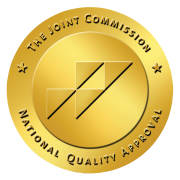Binge Eating Disorder: Understanding Key Facts
Notice the increase in media portrayals of individuals battling eating disorders, including binge eating disorder. Imagine sitting at your dinner table, feeling ashamed after consuming double the average portion in a short time.
These episodes are not isolated.
Binge Eating Disorder (BED) may be the underlying cause. It is characterized by recurring episodes of eating unusually large amounts of food.
Recognizing Emotional Signs
Emotional indicators of Binge Eating Disorder (BED) often manifest as profound feelings of guilt or shame following a binge episode. Sufferers may also experience heightened anxiety, which can exacerbate their eating behaviors.
In addition to guilt and anxiety, individuals may feel a “numbing effect.” This occurs as a response to overwhelming situations, where eating becomes a coping mechanism. Over time, this emotional distress can contribute to a deteriorating sense of self-worth, emphasizing the importance of seeking professional support.
Frequent Feelings of Guilt
Guilt can permeate one’s thoughts—particularly after binge episodes—leading to an incessant cycle of negative emotions.
Profound guilt can exacerbate emotional distress, making it crucial to address these feelings promptly.
When individuals repeatedly experience guilt after binge eating, the cycle can impact their mental health and self-esteem. This guilt may drive them to engage in further disordered eating behaviors, perpetuating the cycle.
Addressing the root cause of the guilt through cognitive-behavioral therapy or support groups can be instrumental. These interventions help in developing healthier coping mechanisms and reducing the frequency of binge-eating episodes.
Persistent Emotional Eating
Persistent emotional eating represents a significant aspect of binge eating disorder.
Individuals often turn to food as a means of coping with negative emotions like stress, sadness, or boredom. This can become a habitual response.
Over time, emotional eating diminishes one’s ability to process and handle emotions in a healthy manner. This deepens the reliance on food as an emotional crutch.
Recognizing emotional eating patterns is a crucial first step towards seeking treatment and developing healthier coping strategies. Professional help can be pivotal.
Therapeutic interventions, such as cognitive-behavioral therapy (CBT), can aid in identifying and addressing emotional eating triggers effectively.
Identifying Physical Symptoms
Identifying physical symptoms of binge eating disorder, a clinically recognized eating disorder, entails several tell-tale signs. These may include rapid weight gain, gastrointestinal distress such as bloating and abdominal pain, and chronic fatigue. Additionally, individuals might experience noticeable fluctuations in weight due to cycles of binge eating. Early recognition of these physical symptoms can significantly influence the success of intervention and treatment strategies.
Noticeable Weight Fluctuations
Individuals with binge eating disorder (BED) often experience significant weight changes. These fluctuations are not merely cosmetic concerns.
Since 2016, research indicates a strong association between BED and weight instability, underscoring the adverse health impacts of these fluctuations on metabolic function and psychological well-being.
Thus, it is essential to understand that one’s weight’s instability is not just a symptom of the eating disorder but can exacerbate the psychological difficulties associated with BED.
Beyond the numbers on the scale, drastic changes in weight can lead to comorbid conditions such as Type 2 diabetes, hypertension, and other cardiovascular issues, further complicating treatment and recovery.
Recognizing these signs early and seeking professional help can mitigate the additional health risks associated with frequent and substantial weight changes.
Physical Discomfort After Meals
Many experience discomfort post meals.
In individuals with binge eating disorder (BED), this discomfort can be severe. They might consume large amounts of food within a short period, leading to feelings of fullness and pain beyond what is typical. Consequently, this can result in significant physical discomfort, including stomach pain, bloating, and nausea.
Pain can be both sharp and persistent.
Physical discomfort often results from the stomach stretching beyond its normal capacity – akin to an inflated balloon – leading to intense gastrointestinal distress.
It’s important to note that recurring post-meal physical discomfort can also contribute to a negative cycle of eating behaviors, feeding into the psychological components of BED. Seeking effective therapeutic interventions, such as cognitive-behavioral therapy (CBT) and medical support, can play a critical role in managing both the psychological and physiological aspects of binge eating disorder.
Understanding Behavioral Patterns
Individuals with binge eating disorder often exhibit specific, self-destructive eating habits that persist over time. These patterns can include eating large quantities of food, even when not hungry, and eating rapidly during episodes of bingeing.
Additionally, those struggling with binge eating disorder (BED) might isolate themselves to conceal their eating behaviors, commonly consuming food in secret. The ingestion of food often provides transient emotional relief, which quickly turns into guilt and regret.
Terms like “bingeing” and “compulsive” are frequently used to describe these persistent actions.
Consuming Food Secretly
Eating food in secret is a common symptom of Binge Eating Disorder (BED) and can indicate deeper emotional struggles.
- Isolation: Many individuals prefer to eat alone to avoid judgment.
- Hiding Evidence: Frequently disposing of food wrappers or packages to conceal consumption.
- Unplanned Eating: Engaging in spontaneous, secretive eating sessions.
- Guilt and Shame: Feelings of embarrassment often accompany secret eating.
Engaging in these behaviors can exacerbate feelings of isolation and distress, creating a vicious cycle.
Understanding these patterns is crucial for identifying BED and seeking professional help.
Eating Rapidly and Past Fullness
One significant symptom of Binge Eating Disorder (BED) is eating rapidly and past fullness. This behavior often leads to physical discomfort and emotional distress.
People may eat quickly without noticing how much food they consume. This can result in consuming large quantities of food in a short period.
Recognizing this pattern is crucial for those suffering from BED, as it can signify a problematic relationship with food. Furthermore, it can contribute to various health issues, such as digestive problems, weight gain, and metabolic disturbances.
Seeking help is essential if you identify with these behaviors. Treatment options include therapy, support groups, and medical interventions designed to address both the psychological and physiological aspects of BED. Early intervention can significantly improve outcomes and promote healthier eating habits.
Steps to Seek Professional Help
Seeking professional help for Binge Eating Disorder (BED) involves a series of critical steps to ensure you find the appropriate support. First, acknowledge that you need assistance and reach out to your primary care physician for an initial evaluation.
They can provide referrals to mental health specialists, such as psychologists or psychiatrists, who are experienced in treating eating disorders.
Furthermore, consider joining support groups specifically for BED, where you can gain insights and encouragement from others facing similar challenges. Utilize resources from reputable organizations, such as the National Eating Disorders Association (NEDA), to find certified professionals and evidence-based treatment options. Remember, early and targeted intervention can profoundly impact recovery and well-being.
Exploring Therapy Options
Therapy for Binge Eating Disorder (BED) includes specialized treatments tailored to individual needs.
- Cognitive-Behavioral Therapy (CBT): Focuses on changing negative thought patterns and behaviors.
- Interpersonal Therapy (IPT): Addresses issues in personal relationships and social functioning.
- Dialectical Behavior Therapy (DBT): Combines CBT with mindfulness techniques.
- Acceptance and Commitment Therapy (ACT): Encourages acceptance of negative thoughts and feelings.
- Medication: Prescribed to manage symptoms, often in conjunction with therapy.
These therapies can be highly effective when administered by trained professionals.
Collaborating with a therapist can provide crucial support and coping strategies.
Choosing the right therapy depends on your unique circumstances and needs. Seek advice from healthcare professionals to find the most suitable option.
If you or a loved one is battling binge eating disorder, reach out to Lido Wellness Center in Newport Beach at 949-541-8466 for compassionate and effective mental health treatment. Take the first step towards healing and recovery today.




